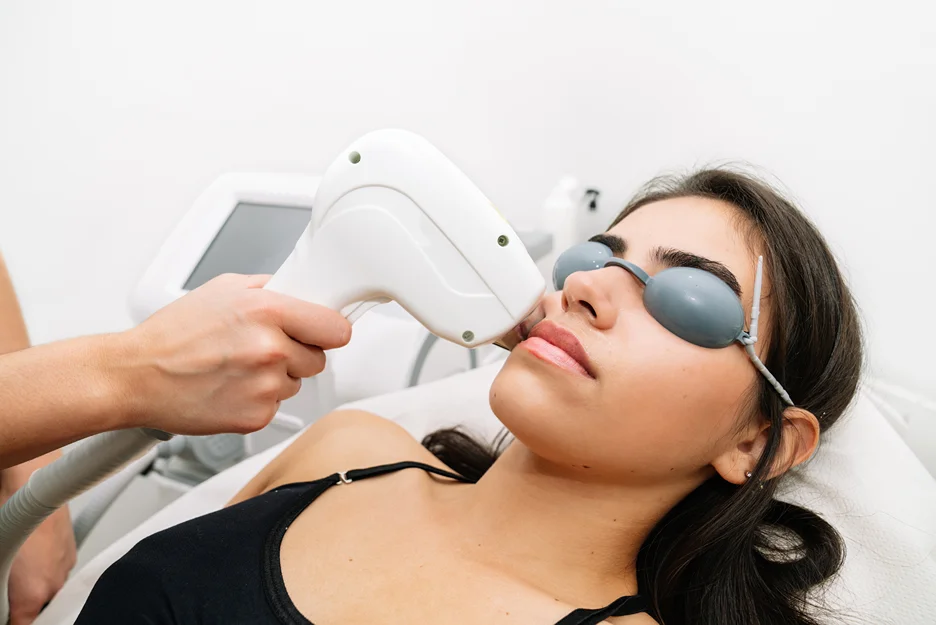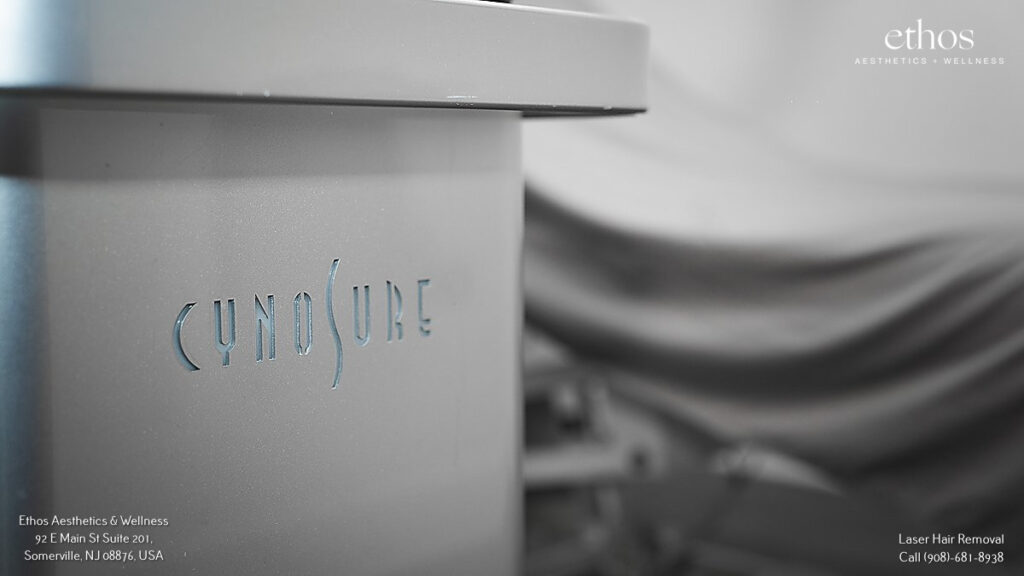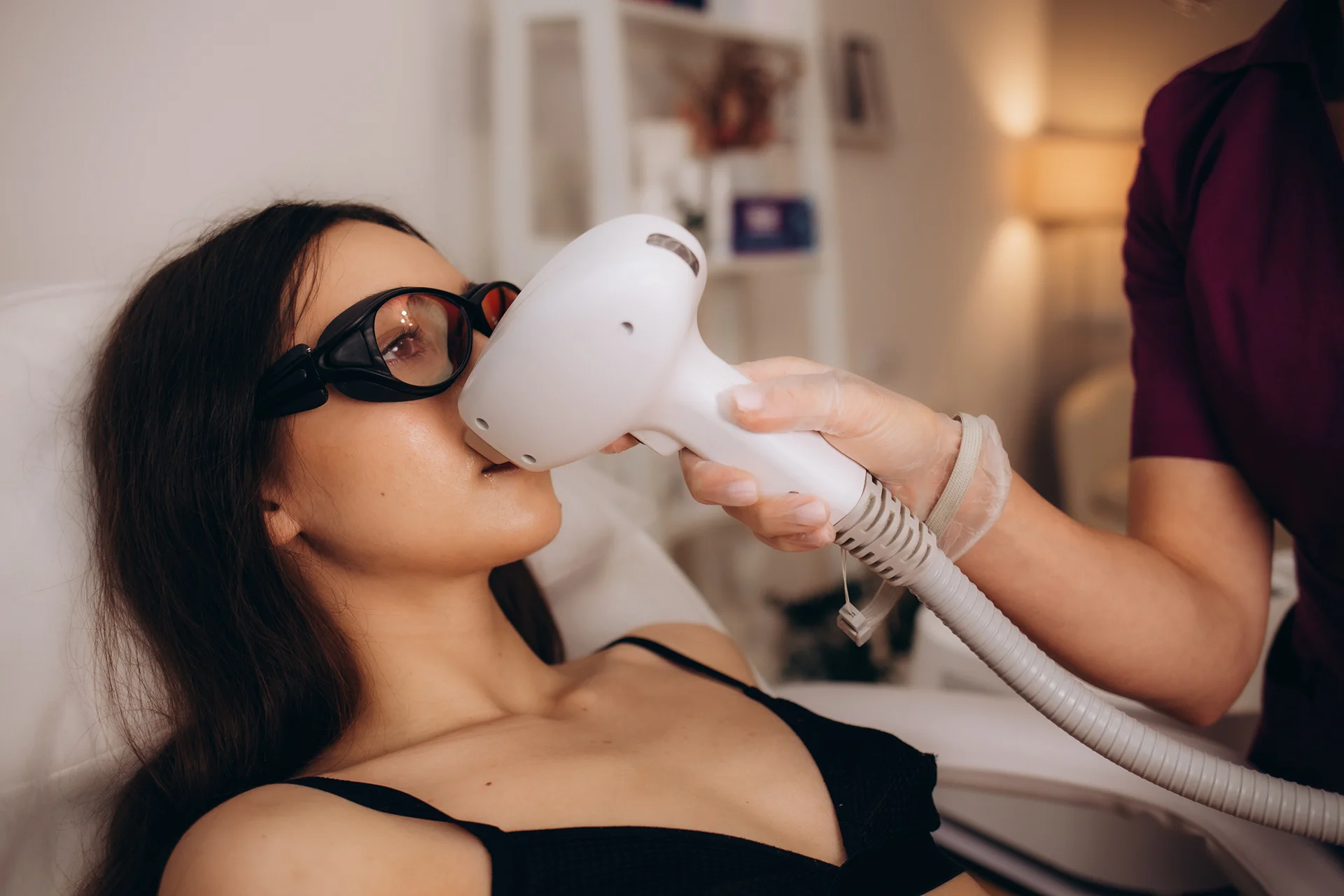Say Goodbye to Upper Lip Hair
Do you feel self-conscious about dark, unwanted hairs on your upper lip? You’re not alone. While facial hair is natural, excessive growth can be distressing.
Traditional methods like plucking and waxing provide only temporary relief. Fortunately, advances in laser technology now offer a long-term solution.
Learn everything you need to know about laser hair removal for the upper lip area. Dr. Hardik Soni of Ethos Aesthetics + Wellness covers the ins and outs of this transformative treatment.
How Does Laser Hair Removal Work?
Laser hair removal targets the melanin pigment in hair follicles. A concentrated beam of light is pulsed onto the skin, where it is absorbed by the melanin. This creates heat that damages the follicle enough to prevent future hair growth.
The laser used is carefully calibrated to only affect the hair shaft and follicle. The surrounding skin remains undamaged. Most devices have integrated cooling systems to further protect the skin.
Laser hair removal is highly effective for dark, coarse hairs. Hair growth is impeded after each session, with complete removal typically occurring after 4 to 6 treatments.
What Are the Benefits of Upper Lip Laser Hair Removal?

Laser hair removal offers clear advantages over traditional hair removal methods:
- Long-lasting results: Waxing and threading provide temporary relief lasting about 4-6 weeks. In contrast, laser hair removal delivers a permanent reduction after a full series of treatments. Most patients enjoy smooth skin for years following their last session.
- Precision: Lasers can selectively target dark hairs without affecting the surrounding skin. Areas near the lip line can be treated with minimal risk of damage.
- Speed: Each laser pulse takes just milliseconds but impacts multiple hairs at once. An entire upper lip area can be treated in minutes.
- Fewer ingrown hairs: Laser treatment reduces the likelihood of ingrown hairs forming after removal. No more plucking and the associated irritation.
- Cost-effectiveness: Although the upfront investment is higher, the long-term savings from not needing waxing or other hair removal methods can be significant.
- Confidence: Being free from upper lip hair can provide a real confidence boost and a sense of freedom.
Am I a Good Candidate for Upper Lip Laser Hair Removal?
Laser hair removal works best for those with light skin and dark, coarse facial hair. The laser targets the melanin pigment in hair. Therefore, there must be a contrast between hair and skin color for optimal results.
Ideal candidates have Fitzpatrick skin phototypes I to IV. This includes those with fair, pale, light brown, or olive complexions. Patients with hormonal imbalances leading to excess facial hair growth often achieve great outcomes.
Those with blonde, red, grey, or white-colored hairs have low melanin content. Laser hair removal is less effective in these cases. However, skilled specialists may use newer devices equipped with additional wavelengths to treat lighter hair. Always consult a dermatologist to determine your options.
Are There Any Safety Concerns?
When performed correctly by an experienced dermatologist, laser hair removal is a very safe procedure. Still, the powerful laser light does carry some risks. Potential side effects include:
- Burns, blisters, or scarring if settings are too high.
- Hypopigmentation or hyperpigmentation.
- Eye injury (always wear protective goggles).
Certain medications and conditions may increase sensitivity to laser light. Be sure to discuss your medical history thoroughly during your consultation. Alert your provider to any:
- Active skin infections.
- Use of photosensitizing medications.
- History of keloid scarring.
- Autoimmune disorders like lupus.
- Pregnancy/breastfeeding (treatment should be avoided).
With proper precautions and an expert specialist, significant risks are rare. Avoid unqualified technicians offering discounted deals. Your safety is paramount.
How Should I Prepare for Treatment?
Proper preparation enhances your results and reduces risks:
- Avoid sun exposure: Laser hair removal works best on skin that hasn’t been recently tanned. Stay out of the sun for 4-6 weeks pre-treatment.
- Stop waxing/plucking: Tweezing, waxing, threading should be avoided for 4-6 weeks before starting. Let hairs grow in so the follicles can be effectively targeted.
- Skip skin products: Retinoids, glycolic acid, and other exfoliating products may cause sensitivity. Avoid 3-5 days before treatment.
- Shave the area: Arrive with hairs shaved to get optimal laser penetration down the follicle.
- Limit caffeine: Decreasing your caffeine intake can make treatment more comfortable.
In your consultation, be prepared to discuss:
- Your hair growth patterns and goals.
- Health conditions and medications.
- Any laser treatments or cosmetic tattooing.
- History of herpes or cold sores (anti-viral medication may be prescribed).
Your practitioner will evaluate your medical suitability and customize a treatment plan.
What Happens During the Procedure?
On treatment day, the area is thoroughly cleaned and shaved if needed. Eye shields will be provided. The laser specialist calibrates the device settings based on your skin tone and hair thickness. Ultrasound gel is applied to the upper lip to enhance contact with the laser handpiece.
Next the handpiece glides over the skin, delivering pulses of laser energy. Each pulse feels like a light pinprick or rubber band snap. While not exactly comfortable, the sensation is brief. Your provider may offer options like topical numbing cream or cooling air to maximize comfort.
A full upper lip treatment takes about 15-20 minutes. Larger areas like the cheeks or chin will require more time. Periodic breaks can be taken as needed. Most patients describe the process overall as tolerable and relaxing.
How Many Sessions Will I Need?
Most patients require 4 to 6 sessions spaced 4-6 weeks apart. Less coarse and dense hair may need fewer treatments. Darker, thicker hair requires more sessions.
Maintenance sessions can keep results looking their best long-term. Your individualized plan will be determined during your consultation. Be sure to follow your provider’s recommendations diligently for the best outcome.
What Is the Recovery Like?
Recovery is minimal. Treated skin may be slightly red or swollen right after the procedure. These effects typically resolve within a few hours.
Some patients experience mild soreness resembling a sunburn. This can be managed with over-the-counter oral medication. Icing the area also provides comfort.
In rare cases, small blisters or scabbing can develop. Follow your post-care instructions carefully to allow proper healing. Avoid picking or scrubbing the treated skin which can lead to infection or scarring.
Other than avoiding sun exposure, you can return to normal activities immediately. Just take care applying cosmetics or other products until the skin is fully healed.
When Will I See Results?
Improvement is gradual over the full course of treatments. After each session, shedding hairs will reveal smoother skin.
Significant hair reduction becomes noticeable after 3 to 4 sessions. Maximum effects usually require 6 treatments. However, patients with hormonal imbalances may need maintenance at less frequent intervals due to continual follicle stimulation.
What Affects the Results?
Outcomes depend on several factors:
- Hair color: Darker pigment absorbs laser energy better. Light or blonde hair is harder to treat effectively.
- Hair density and coarseness: Thick, dense growth responds better than fine or sparse hairs.
- Skin tone: Pale skin with dark hair provides ideal contrast for the laser to work well.
- Hormonal issues: Conditions like PCOS may perpetuate new hair growth requiring ongoing maintenance.
- Medications: Certain drugs also stimulate excess facial hair. Let your provider know about any prescriptions.
- Compliance: Skipping or delaying recommended treatments reduces effectiveness. Follow your schedule diligently.
Genetics, ethnicity, metabolism, and age can also play a role. Your practitioner will review realistic expectations during your consultation.
How Do I Maintain the Results Long-Term?
- Schedule Regular Maintenance: After completing initial treatments, book a follow-up session every 6-12 months to target any new hair growth and preserve your hair-free results.
- Adhere to a Recommended Schedule: Individual hair growth varies, so follow the personalized treatment timeline suggested by your provider for the best long-term outcome.
- Embrace a Healthy Lifestyle: Avoid habits that can affect hormone levels and hair growth, such as excessive alcohol and caffeine intake, smoking, and drastic weight changes.
- Manage Underlying Health Conditions: Conditions like PCOS can affect hair regrowth; work with your healthcare provider to control these factors through proper medication and lifestyle adjustments.
By committing to these steps, you can extend the benefits of your upper lip laser hair removal and enjoy lasting smoothness.
Won’t The Hair Just Grow Back? The Truth Behind Common Myths
If you’re considering laser hair removal, you may have some lingering doubts. Let’s separate fact from fiction on some common misconceptions.
Myth: The results don’t last long.
Fact: When performed properly over a full course of treatments, laser hair removal provides permanent reduction. Regrowth might happen eventually, but it is significantly impaired. Maintenance sessions sustain the results long-term.
Myth: It’s not effective for blonde or white hair.
Fact: While lasers work best on darker hair, newer technology expands the range of suitable hair colors. An expert provider can advise if your hair can be effectively treated.
Myth: It’s a painful procedure.
Fact: Most patients experience only mild discomfort comparable to a rubber band snapping on the skin. Topical anesthetics are available to maximize comfort if needed.
Myth: It causes skin damage or scarring.
Fact: When done correctly by a qualified professional, the laser selectively affects the hair without disturbing the surrounding skin. The risk of scarring is extremely low.
Myth: Home laser hair removal devices work just as well.
Fact: Professional devices at a clinic are vastly more powerful and effective than weaker home models. There is simply no comparison in terms of results.
Myth: You need to be free from all medications and skin conditions to have it done.
Fact: Many medications and conditions simply require precautions before treatment. Discuss your situation with your practitioner to determine if laser treatment is still an option for you. Don’t rule it out before exploring specifics.
Choose Your Provider Carefully
Laser hair removal is a cosmetic procedure that requires specialized skill and experience for optimal safety and results. Avoid bargain deals at non-medical spas.
Look for an experienced board-certified dermatologist who specializes in laser treatments. Their knowledge of skin biology, hair growth, and laser technology translates into effective, lasting results.
Reputable clinics take your comfort seriously and offer numbing cream, cooling systems, and other pain relief. Beware of offices that rush you in and out quickly.
At Ethos Aesthetics + Wellness, Dr. Hardik Soni uses advanced laser technology with built-in skin cooling. His training and expertise provide precise, customizable treatments tailored to your hair type and goals.
Take your time researching practitioners thoroughly before choosing whom to trust with your skin.
FAQs About Laser Hair Removal
What is upper lip laser hair removal and how does it target unwanted hair?
Upper lip laser hair removal is a medical procedure that uses a concentrated beam of light to target the melanin pigment in hair follicles, effectively reducing future hair growth and offering a permanent solution to unwanted facial hair.
Is laser hair removal treatment suitable for all skin types and hair colors?
Yes, advancements in laser technology have made laser hair removal effective for a variety of skin types and hair colors, although it works best on individuals with darker hair and lighter skin due to the contrast in melanin pigment.
Can laser hair removal be used to treat dark skin without causing skin irritation?
With the use of specific laser devices designed for darker skin tones, laser hair removal can be safely performed on dark skin with minimal risk of skin irritation or damage to the outer layers of skin.
What should I expect during a laser hair removal session, and will it be painful?
During a session, you’ll feel a sensation often compared to a warm pinprick or the snap of a rubber band. Topical anesthetics can be applied to manage discomfort, making it a commonly tolerated cosmetic procedure.
How many sessions of upper lip laser treatment are typically required for long-lasting results?
Most patients require 4-6 sessions for long-term hair reduction, but additional sessions may be needed for optimal results, depending on hair density and growth cycle.
Are there any potential side effects of upper lip laser hair removal?
Some common side effects include temporary redness or swelling. Adverse effects are rare but can include changes in skin pigmentation, especially if post-treatment care instructions, like avoiding tanning beds and using broad-spectrum SPF30 sunscreen, are not followed.
How does laser hair removal compare to other hair removal methods like wax strips or hair removal creams?
Laser hair removal offers a more permanent method for reducing hair growth compared to temporary solutions like wax strips or hair removal creams, which typically result in regrowth within days to weeks.
What are the costs associated with laser hair removal for the upper lip?
The cost of laser hair removal varies based on geographic location, the experience of the medical professional, and the number of sessions required. A complimentary consultation with a laser technician can provide a personalized treatment plan and cost estimate.
Can hormonal imbalances like ovarian syndrome affect the success of laser hair removal?
Yes, conditions like PCOS can lead to excessive hair growth, impacting the success of laser hair. It’s essential to manage these conditions with proper medication and inform your care team to adjust the treatment plan accordingly.
What kind of maintenance treatments are needed after completing the initial laser hair removal sessions?
Maintenance laser treatments are recommended every 6-12 months to manage any additional hair growth and maintain smooth, hair-free skin, with the frequency tailored to your individual needs as advised by a board-certified dermatologist.
Is Laser Hair Removal Right for You? Schedule a Consultation Today!

Unwanted upper lip hair can be frustrating and embarrassing. But you don’t have to live with it forever. Laser hair removal offers a proven permanent reduction to finally reveal smooth, hair-free skin.
Dr. Hardik Soni of Ethos Aesthetics + Wellness offers complimentary consultations at their clinic in New Jersey. Call or book online today to discuss your case. Don’t let unwanted hair hold you back any longer—take control and experience the confidence you deserve!
Still have questions? The best way to determine if it’s right for your specific needs is to schedule a personalized consultation.







